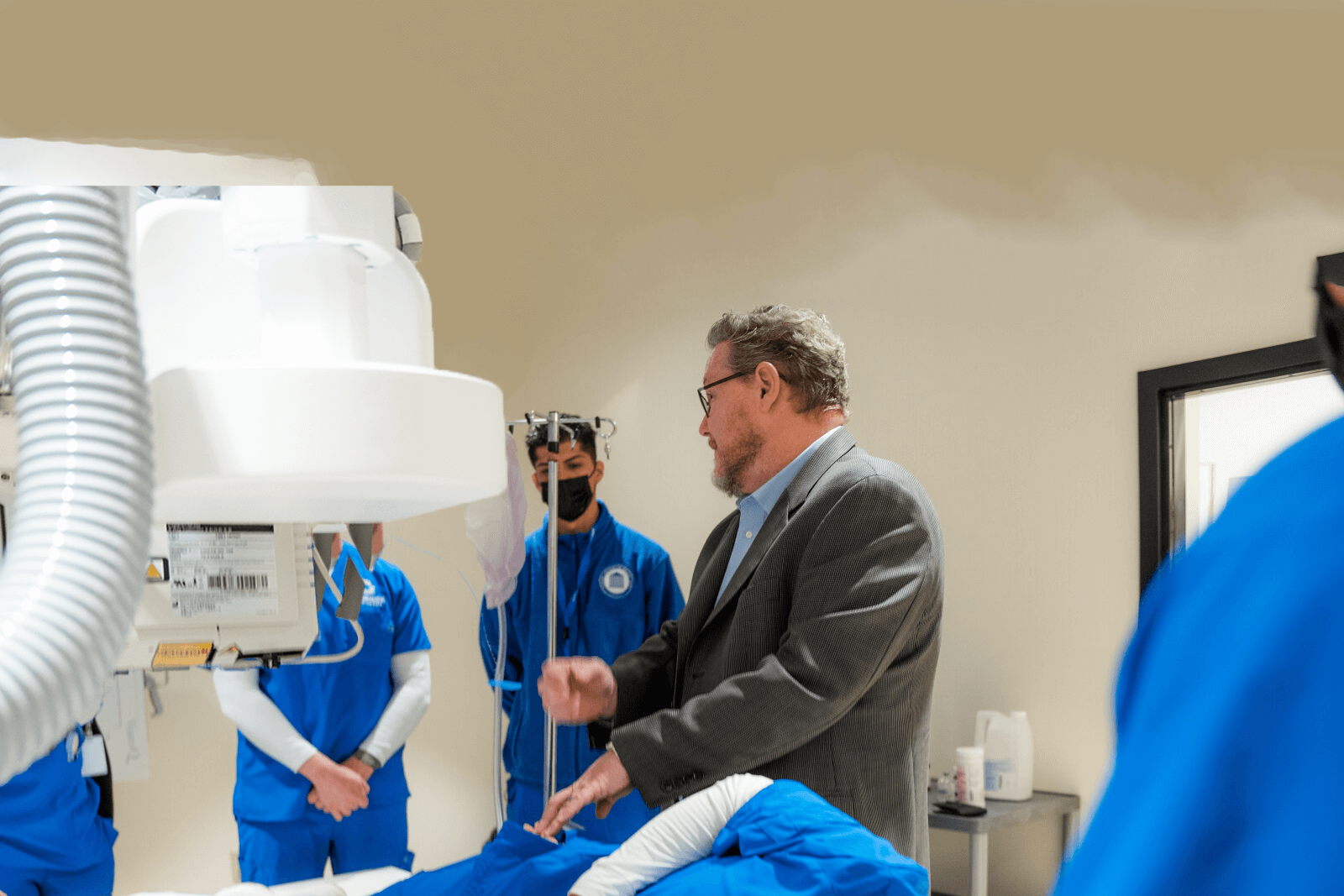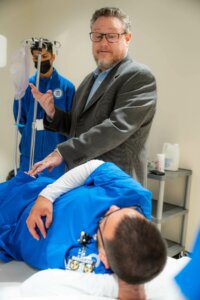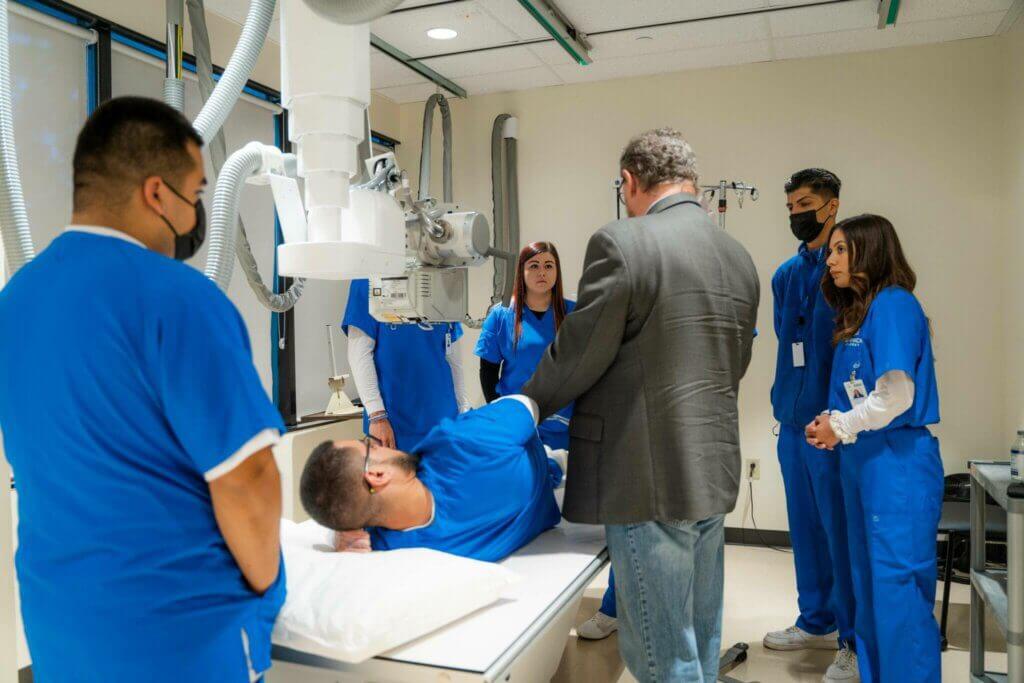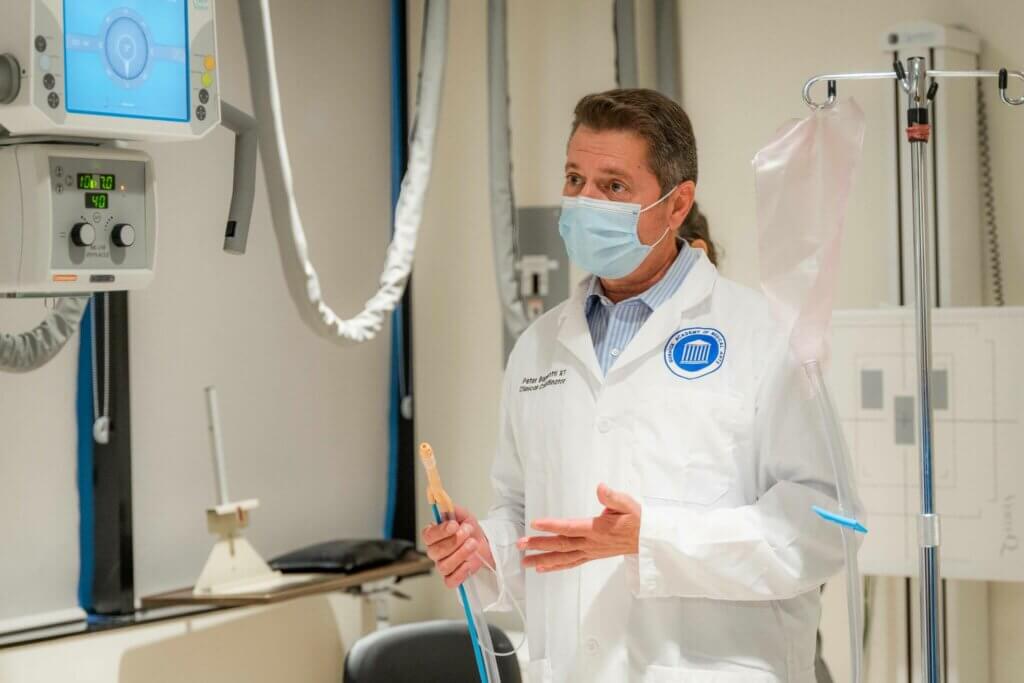Too Late, Too Hard to Obtain a Specialty Track? Think Again
Date: October 3, 2022
Did you once see yourself as a trained healthcare specialist or envisioned yourself wearing a white lab coat aspiring to help others? Feel like it’s too late in life? Or that your schedule is too hectic to fit in school? Well, don’t give up on that fitted lab coat just yet. Getting into a wellness track and earning a degree in a healthcare specialty may be simpler, faster, and more exciting than you imagined.
Radiologic Technology (RT), an expanding, robust field, studies X-rays and radiography for preventative and diagnostic healthcare and wellness. In brief, RTs provide vital diagnostic-imaging services for wellness communities.
Common Misperceptions
1 Going Back to School Takes Too Long
One common misperception of returning to school is that “it takes too long.” However, an RT degree can take as little as two years. Moreover, an RT education often commences with an associate’s degree.
Of note, even with a relatively brief training time, the RT field commands an average salary of more than $62,280 per year.4 Additionally, students can use and apply real-life work experiences within most accredited programs.3 Considering this novel effort-time-to-reward ratio, an RT-based vocation can be tempting for many job seekers. More so, it can be tempting for those wishing to pivot from autopiloting slumps into new careers. For some, this is an incentive to go for those white lab coats, finally!
2 It’s Upsetting to One’s Work-life Balance
The second misperception of returning to school is that it’s “upsetting to one’s work-life balance.” Suppose the idea of putting the family dog on Craigslist, heading to the East Coast, and joining a pretentious fraternity makes you queasy. In that case, the good news is one can most often complete an Associate of Science (A.S.) degree in Radiologic Technology at a nearby institution. By and large, this allows one to stay local and eliminates the need to uproot one’s life. (Although fraternities on the other side of the U.S. make a pretty good bean dip!)
Further, most A.S. in RT trajectories provide for many not-so-usual lifestyles. Often courses include flexible schedules. Today, most programs have classes designed around the working professional. Many academic offerings provide blended delivery methods, with much coursework conducted online. Most often, there is hands-on training at on-campus labs and externship work at clinical sites.
Many schools, such as Gurnick Academy of Medical Arts, offer student programs, tutors, and career-scaffolding services. Correspondingly this aids apprehensive and return-to-the-classroom students.
3 Rad Techs Only Work in Hospitals
The third misperception for not pursuing schooling in Radiologic Technology is, “One will work solely in hospitals or emergency rooms.” A little-known secret is that careers in the evolving RT world can be just as eclectic as the images ensuing from them. More than plates, film, X-rays, gamma rays, or radiation, this corner of the healthcare community offers varying professional landscapes.
From sports to private institutions, the modern specialist can choose from a plethora of environments. These professionals successfully master biology, theory, chemistry, and mathematics courses. Notwithstanding, they go on to join the full-time ranks at facilities, world-renowned educational institutions, and cutting-edge laboratories.4
4 RT is Only About Film and Machines
The fourth misperception of not pursuing schooling in this area is that technologists “work only with film processing machines.” But specialties in Radiologic Technology can expand the likelihood of advancement in leadership roles while increasing the probability of access to partnering or “sister” industries. For instance, radiographers diversify into various specialties, including radiation, ultrasound, and nuclear medicine.3 These areas encompass certificate, associate, bachelor’s, and master’s degree programs. All the while, they emphasize people skills and a good bedside manner.
As with all economic climates, the ability to form a hybrid skillset most often only strengthens one’s position within a given field. Generally, coordinating the “mix-matching” of personal preferences to specialties using personal and professional interests increases one’s overall earning potential. Some exciting medical niches pursuable upon earning the A.S. in Radiologic Technology include the following fields.
Some Specialty Areas
1 Mammography Technologist
With an approximate salary of $83,2159 a year in California, mammography technologists report satisfaction in being part of early disease detection, involvement and direct work with patients, and ongoing access to cutting-edge medical trends and equipment.1
Earning a specialty in this area generally requires an A.S. degree, 40 hours of mammography continuing-education credits (CECs), performing 25 supervised mammograms,5 then certification and registration. State licensure may also be required.1
2 MRI Technologist
The MRI Technologist uses magnets and radio waves to create detailed images of a person’s tissues and organs. The average salary for specialists in this field is approximately $62,2808 a year. You may want to pursue this specialty if you are proficient in computers, have worked in Radiologic Technology, and possess thorough cross-sectional human anatomy knowledge.1 Those wanting a future in the field should also seek courses specializing in MRI scanning while obtaining the A.S. degree.
3 Chief Radiologic Technologist
A chief radiologic technologist role is an excellent vocation if one desires to work in healthcare management. This professional oversees Radiologic Technology teams while acting as the head of a radiology lab. Simultaneously, many chief radiologic technologists opt to acquire business degrees as they manage the lab’s day-to-day business operations. These managers make approximately $84,683 annually.6
Management positions in hospitals or facilities generally require a bachelor’s degree or higher and registration. Generally speaking, leadership positions require at least three to five years of experience in related areas.
Additionally, one should have a comprehensive knowledge of functional regions and departmental processes.2
4 Radiologic Technology Educator
For those who enjoy teaching, becoming a Radiologic Technology educator is an excellent way to enter the healthcare field and educate future Radiologic Technologists. Clinical educators work at colleges and universities, hospitals, and imaging centers. These professionals train employees regarding their organization’s equipment, accrediting procedures, and standard operating processes.
The role’s salary is on the upper end of the pay scale, with an educator’s gross salary in the U.S. at around $109,939 annually. (Salary estimates are based on survey data collected directly from employers and anonymous employees in the U.S.)7 The role generally requires obtaining an A.S. degree, certification, and acquiring two years of experience.
Inspect the ‘Anatomy’ of Your Vocation
Moreover, critical diagnostic imaging services are a vital part of the evolved healthcare community. Whether you are transforming, evolving, or desperately attempting to revive a long-lost healthcare dream, RT and its various specialties are modalities worth considering.
Overall employment projections for Radiologic and MRI Technologists are projected to grow more than seven percent from 2019–2029. Explicitly, this is faster than the average for all occupations.8 Correspondingly, as the population grows older, forecasts project increased medical conditions requiring imaging as a diagnostic instrument.8 Considering all RT offers, now may be the best time to prop up your prior aspirations, place them in an upright position, and feed those former dreams a large RX dose of radiologic course offerings.
In Summary
Beyond crossing basic anatomy classes off your course list, diagnostically examine the “picture” of your vocation from time to time. Chiefly, learn more about the Gurnick Academy of Medical Arts A.S. in Radiologic Technology program. Then, while you are at it, pick out the monogrammed initials for that new lab coat!*~
*Please note all salaries listed above are based on recent data and may not be your personal experience. Wages vary on many factors, including geography, need, experience, history, and company culture.
Citations:
1^a, b, c Joint Review Committee on Education in Radiologic Technology (JRCERT). “Entry to Mid-level Careers: A World of Career Opportunities in Radiologic Technology.” Association for Medical Imaging Management, American Healthcare Radiology Administrators. Jan. 2021. (Accessed Jan. 5, 2021.)
2 “Radiologic Technologist II Salary in the United States.” Salary.com, 2020. (Accessed Jan. 5, 2021.)
3^a, b “Preparing to Perform MRI of the Brain.” American Society of Radiologic Technologists, ASRT Centennial American Society of Radiologic Technologists. (Accessed Jan. 5, 2021.)
4^a, b “Radiologic Technologist:” EHC ExploreHealthCareers.org, Liaison International, 2016. (Accessed Jan. 5, 2021.)
5 “Frequently Asked Questions.” Medical Technology Management Institute, CHP Continuing Education. (Accessed Jan. 4, 2021.)
6 Payscale. “PayScale Base.” PayScale, 2019. www.payscale.com/. (Accessed Jan. 4, 2021.)
7 n.d. “Radiologic Technology Teacher Salary.” Salary Expert. Economic Research Institute. (Accessed Feb. 22, 2021.)
8 ^a, b, c “Radiologic and MRI Technologists.” Occupational Output Handbook. Sept. 1, 2020. Bureau of Labor and Statistics, U.S. Department of Labor. (Accessed Dec. 20, 2020.)
9 “Mammography Technologist.” Salary.com. 2021. (Accessed Jan. 3, 2021.)









